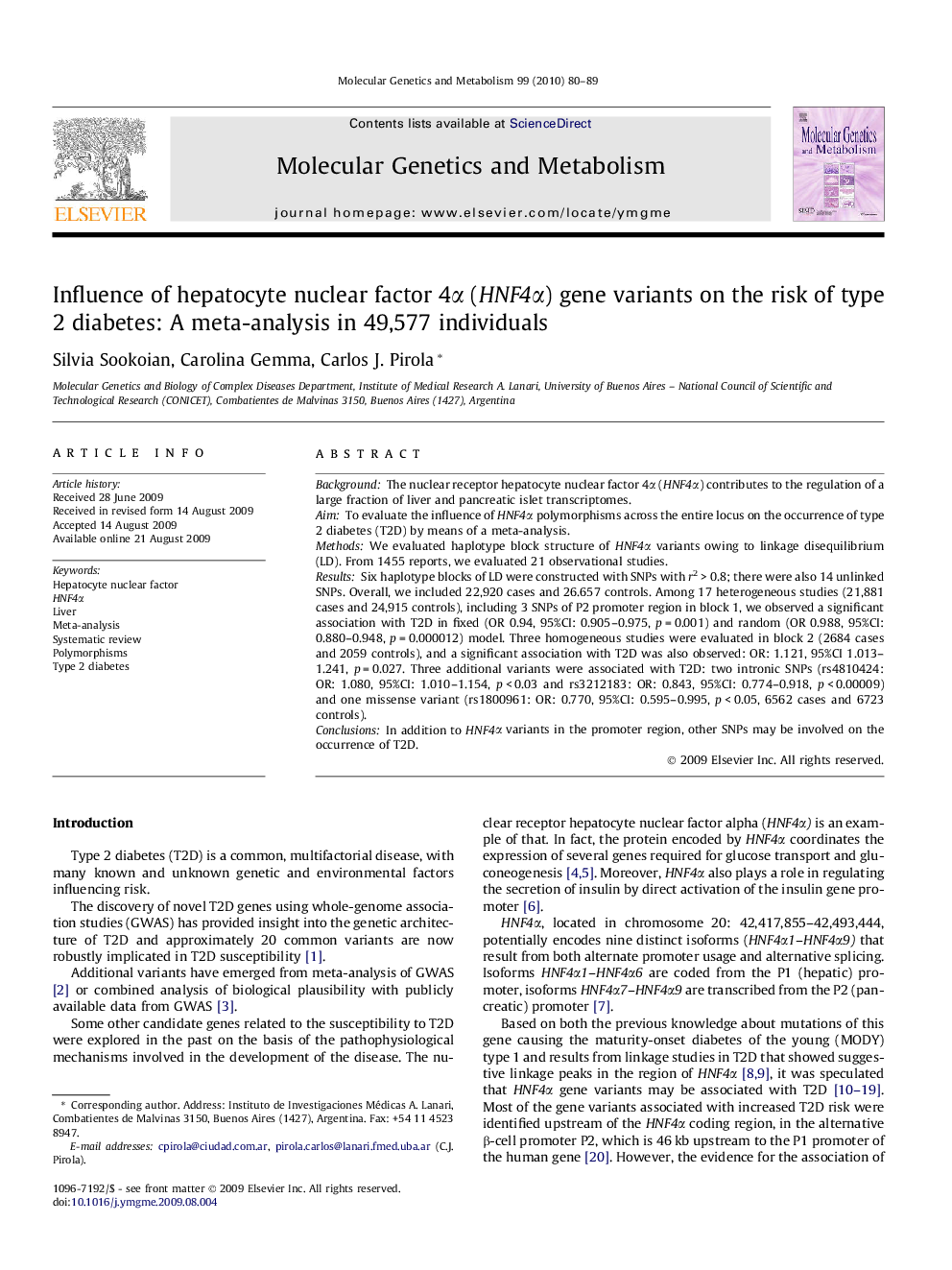| Article ID | Journal | Published Year | Pages | File Type |
|---|---|---|---|---|
| 1998589 | Molecular Genetics and Metabolism | 2010 | 10 Pages |
BackgroundThe nuclear receptor hepatocyte nuclear factor 4α (HNF4α) contributes to the regulation of a large fraction of liver and pancreatic islet transcriptomes.AimTo evaluate the influence of HNF4α polymorphisms across the entire locus on the occurrence of type 2 diabetes (T2D) by means of a meta-analysis.MethodsWe evaluated haplotype block structure of HNF4α variants owing to linkage disequilibrium (LD). From 1455 reports, we evaluated 21 observational studies.ResultsSix haplotype blocks of LD were constructed with SNPs with r2 > 0.8; there were also 14 unlinked SNPs. Overall, we included 22,920 cases and 26.657 controls. Among 17 heterogeneous studies (21,881 cases and 24,915 controls), including 3 SNPs of P2 promoter region in block 1, we observed a significant association with T2D in fixed (OR 0.94, 95%CI: 0.905–0.975, p = 0.001) and random (OR 0.988, 95%CI: 0.880–0.948, p = 0.000012) model. Three homogeneous studies were evaluated in block 2 (2684 cases and 2059 controls), and a significant association with T2D was also observed: OR: 1.121, 95%CI 1.013–1.241, p = 0.027. Three additional variants were associated with T2D: two intronic SNPs (rs4810424: OR: 1.080, 95%CI: 1.010–1.154, p < 0.03 and rs3212183: OR: 0.843, 95%CI: 0.774–0.918, p < 0.00009) and one missense variant (rs1800961: OR: 0.770, 95%CI: 0.595–0.995, p < 0.05, 6562 cases and 6723 controls).ConclusionsIn addition to HNF4α variants in the promoter region, other SNPs may be involved on the occurrence of T2D.
